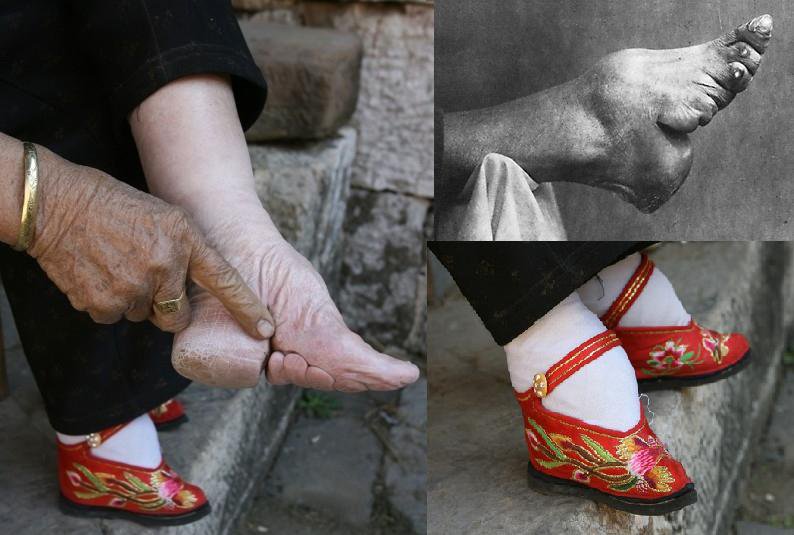Large, Powdered Wigs
In 17th century Europe kings, nobility and aristocrats could be recognized by their large, powdered wigs. This trend began when King Louis XII was mocked for being prematurely bald. To conceal his head, he used a sizeable curly wig to demonstrate his status. It soon became a fad all over Europe, as it displayed wealth and rank.
Foot Binding
Foot binding or “Lotus Feet” was a custom in China that usually represented wealth and was a symbol of beauty. Young girls would have their toes and the arch of their foot forcibly broken and then bandaged in order to keep their feet at a desirable size. The upper-class would often be seen following this trend, as it showed they did not have to work in the fields and were therefore well-off.
Chopines
Like foot binding and large, powdered wigs, chopines were symbolic of status. Initially, chopines were created to protect a woman’s shoes and to help tread through the muddy streets. However, they soon represented the social standing of the wearer, the wealthiest women would be seen wearing chopines that were up to 50 cm tall!
Bird-like Masks
In the 14th century, most of Europe was infected with the Black Death. During this time people believed in miasma theory, which was the belief that the plague was caused and spread through bad smelling air. As a result, doctors wore a frightening costume consisting of a bird-like mask that was filled with sweet or strong scented things, an overcoat, boots and a stick to poke patients with to avoid being infected.
Patches
The Romans used patches of velvet or leather to cover skin imperfections such as blemishes and pretended they were beauty marks. Patches were often placed above the lip or near the eye.




.png)
